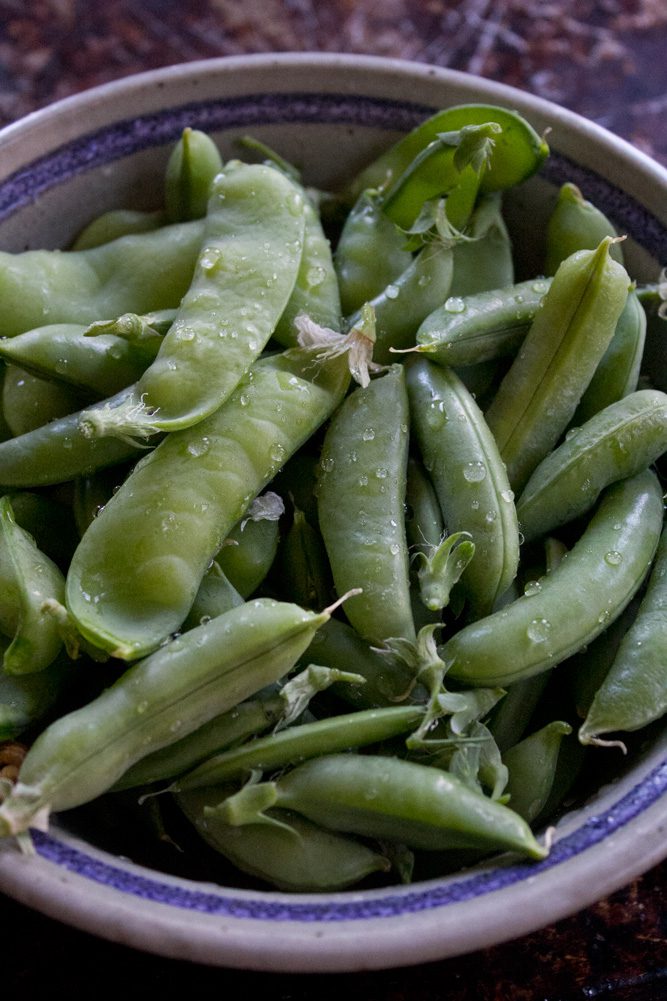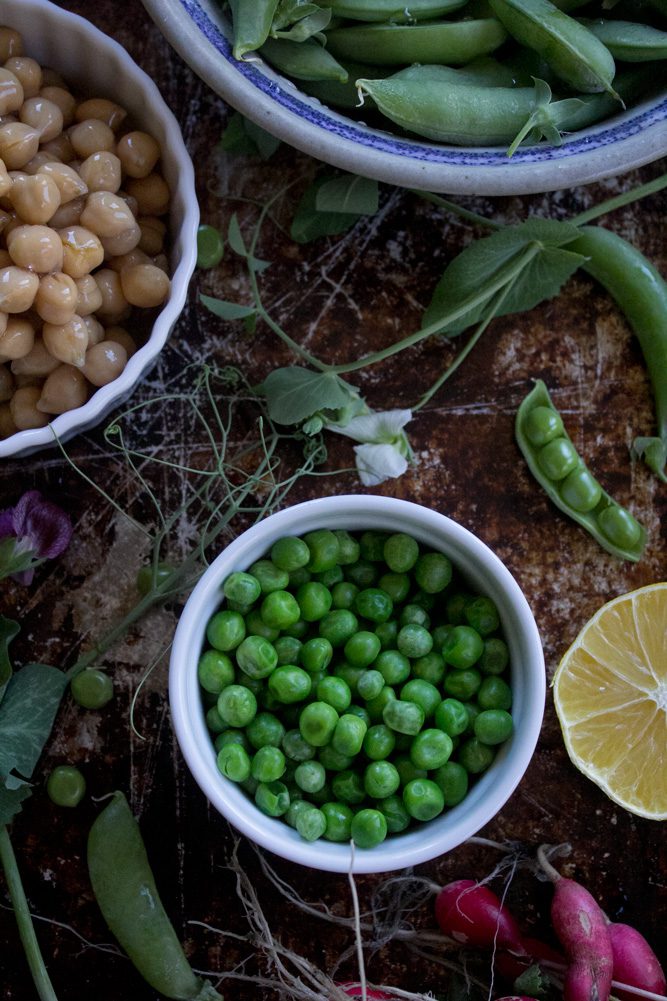
52 Weeks of Hummus //Healthy //Herbs //Potager //Recipes
Fresh Pea Hummus
February 11
3 min read
3 Comments
Fresh Peas + Mint, Please
Fresh sweet shelling peas picked straight off the vine bring an earthy green freshness to hummus. Seasoned with fresh dill, lemon, and a small garlic clove, this hummus brings out the subtle flavors of spring (which comes early in Southern California). Since we plant peas for the spring and fall seasons, this is a favorite hummus version throughout the cool seasons.
The Modern Potager Kitchen Garden
The joy of the modern potager is getting to expand your culinary skills and make restaurant-quality meals at home. Picking fresh ingredients from the garden and turning them into something that awakens your tastebuds and thrills is really what life is all about.
It should come as no surprise that I have a high appreciation of historical foods as an heirloom gardener. One of the oldest and most historically relevant dishes in human history is hummus.
And I could eat hummus morning, noon, and night. On its own with fresh flatbreads, alongside eggs, or loaded with roasted veggies. It’s this love of hummus that led Matthew to adamantly state, “You cannot survive on hummus and cucumbers alone.” As we shared a plate of one of my favorite variations, roasted red pepper hummus, with fresh radishes, cucumbers, and herbs from the showcase garden, the challenge of his statement kept dancing in my mind.
While it made me laugh in the moment, the notion that I could not survive off such a healthy dietary staple sent me down a path of cultural exploration and adventures in the kitchen for weeks on end. I wanted to understand the lore surrounding hummus and its impact upon the world. And truth be told, I wanted to discover if one could survive on hummus without getting bored.
In short, I’ve accepted the challenge to explore all that hummus has to offer in both traditional and new ways with the help of some fantastic local chefs, food bloggers, and a little creativity. Together, we’ll make a year’s worth of delicious hummus variations—52 recipes that feature the best of seasonal produce and pantry essentials.
We’ll test various cooking techniques, discussing the pros and cons of each method to achieve multiple results. While some chefs swear by using dried chickpeas and removing the skins, today’s high-powered blenders make quick work of tinned beans with their skins intact.


THE HISTORY OF HUMMUS
The earliest known origins of hummus date back to the 13th century, with several cultures claiming the creation of the savory dip. Yotam Ottolenghi, chef and cookbook author, writes about the hummus wars in his book “Jerusalem: A Cookbook.” But Israel isn’t the only country where people argue over the best hummus recipe. Palestinians, Egyptian Arabs, Greeks, and other Middle Eastern and Mediterranean countries also declare hummus as their dish, each region adding its own nuances.
The essence of the classic hummus recipe are chickpeas, tahini, lemon juice, and salt. As cooking methods have changed over the centuries, the textural preferences and techniques used to create the creamiest dip have altered the base recipes.
PEAS: A TRIP AROUND THE GLOBE
The pea is one of the oldest cultivated crops, although the origins of domesticated peas have not been definitely determined. The pea is native to western Asia and North Africa. Wild peas can still be found in Afghanistan, Iran, and Ethiopia. Cross-breeding throughout the millennia have given us the soft and sweet treat we’ve come to enjoy. The earliest evidence for the purposeful cultivation of peas is from the Near East at the site of Jerf el Ahmar, Syria about 9,300 calendar years BCE. European colonization introduced peas to the New World and other regions throughout the globe.


Fresh Pea Hummus with Dill + Mint
Makes approximately 1 1/2 cups of fresh hummus | 4 servings
Created from years of making hummus + inspiration from Veggie Desserts
Ingredients
1 1/2 cups hydrated garbanzo beans/chickpeas (this is approximately 1 can), drained (reserve water brine)
2 tablespoons tahini (sesame paste)
1 cup fresh peas, boiled for 30 seconds + cooled (You can also use frozen in a pinch)
1 Lemon, zested + cut for juice
1 small garlic clove
1 teaspoon fresh dill
Sea salt + fresh cracked pepper
Glug of really good extra virgin olive oil
Really good extra virgin olive oil
Flaky sea salt
1/2 teaspoon fresh dill
1 teaspoon fresh mint, minced
Fresh pea sprouts
1) Wash and peel the fresh peas. Bring a small saucepan of salted water to a boil and flash cook the peas for 30 seconds. Strain and place the peas in an ice bath. Once cool, strain and set aside.
2) Drain the hydrated garbanzo beans reserving the liquid to help thin the hummus, as needed. Place in a high-powered blender with tahini, juice from half the lemon, small garlic clove, peas, fresh dill, and freshly cracked pepper + a pinch of sea salt. Blend at high speed until smooth, scraping down the sides if needed. If the mixture is not blending well, add 1-2 teaspoons of reserved bean liquid to help thin. Add one circle of olive oil (about 2 teaspoons) and blend again.
2) Place hummus in a shallow bowl and dress with fresh dill + mint, a drizzle of extra virgin olive oil, and a sprinkling of flaky sea salt and freshly cracked pepper.
Serve the hummus with radishes, sweet peas in pods, and warm flat breads.

Leave A Comment